
Seminal queer cinema
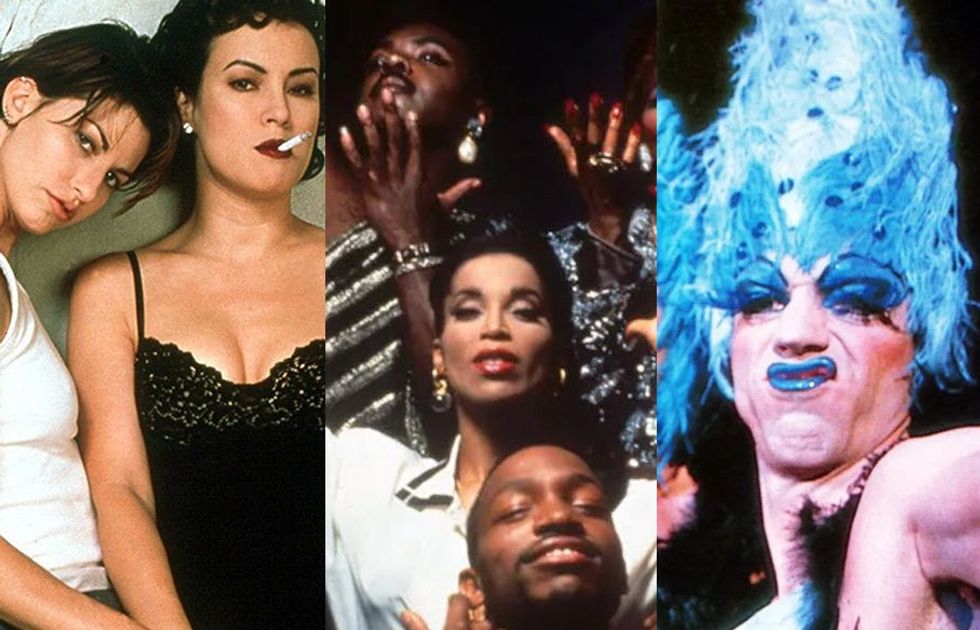
Generation Z is making waves and upsetting the status quo in unique ways by living louder and prouder than past generations had been able to and speaking truth to power in bigger numbers than we’ve seen before, but older generations still have something to learn from the older queer generations!
Including the seminal LGBTQ+ films that have both been shaped by and impacted queer culture and have influenced countless tv shows and movies that young people love today — think Drag Race and Heartstopper.
Despite how it may feel these days, we have made amazing strides in getting closer to equal rights and being able to live loud and proud more than previous generations, and while most of that is thanks to the tireless work of LGBTQ+ activists, movies about queer people have helped to move the needle too.
Movies have the power to create empathy where none existed before, show the general public a segment of society that was largely ignored, and make marginalized groups feel seen and accepted. So let’s take a look at the groundbreaking, iconic, and seminal queer films that every young person needs to see!
1. Glen or Glenda (1953)

Synopsis: A psychiatrist tells the stories of a transvestite (named Glen or Glenda) and a pseudohermaphrodite (named Alan or Anne).
Why it's important: Loosely inspired by the gender-affirming surgery Christine Jorgensen, which made national headlines, and directed by enthusiastic cross-dresser Ed Wood, while not perfect, the film is a plea for tolerance and a surprisingly loving depiction of a trans woman that was unheard of in the ‘50s. It’s a film that is frequently referenced and was the starting point of a lot of the campy and avant guard queer movies we see today.
2. Boys in the Band (1970)

Synopsis: A group of 30-something gay men gather to celebrate the birthday of their friend Harold, who is a self-hating gay man, but one of their straight friends crashes the party.
Why it's important: Based on the groundbreaking off-Broadway play and starring the original cast, this is a seminal piece of queer cinema because every plot you’ve seen in a gay movie since likely has its genesis in this film. While there may be some stereotypical characters, it showed gay men on screen at a time and focused on gay topics at a time when that was unheard of.
3. Pink Flamingos (1972)

Synopsis: Notorious Baltimore criminal Divine goes up against a sleazy married couple who attempt to humiliate her and seize her title as "The Filthiest Person Alive."
Why it's important: This cult film, made by out gay director John Waters and starring the drag queen Divine, was banned in several countries but remains a classic of queer cinema for its outside art feel, its transgressive visuals and taboo-smashing plot, and for celebrating filth like only the “king of sleaze” could.
4. The Rocky Horror Picture Show (1975)

Synopsis: A musical that follows a newly engaged couple who break down in an isolated area and must seek shelter at the bizarre residence of Dr. Frank-n-Furter.
Why it's important: Not only does The Rocky Horror Picture Show feature a whole spectrum of queer characters — including Frank-N-Furter, Riff Raff, and Magenta, who all come from the planet Transsexual — and was super campy, but it became a cult classic at midnight theaters with audience interaction and on-stage performances that became a haven for queer youth to express themselves.
5. The Color Purple (1985)
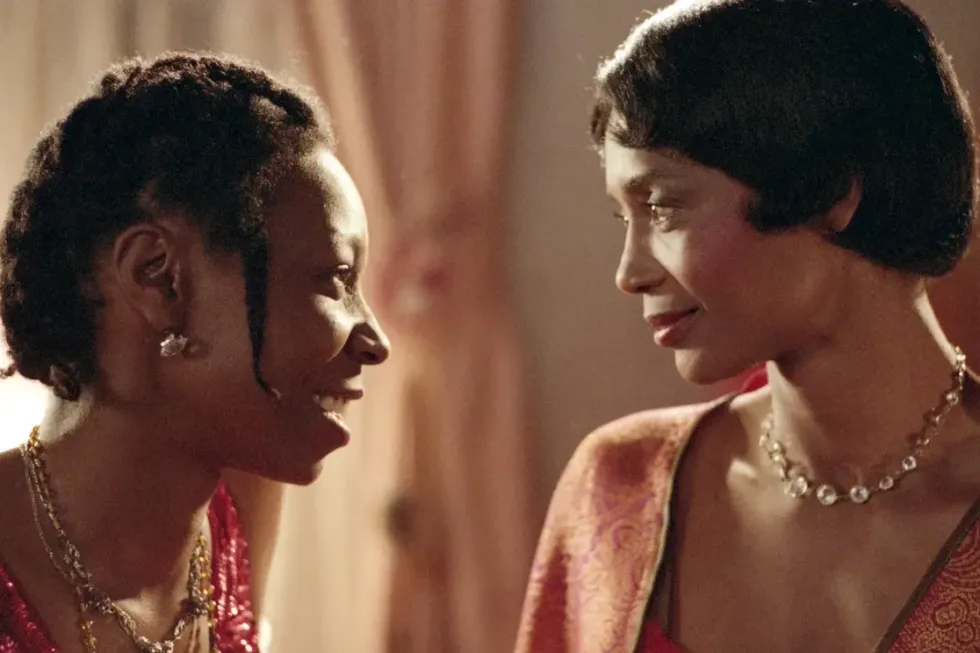
Synopsis: Based on the novel by Alice Walker, spans 40 years and tells the story of Celie, a Black woman living in the South who survives incredible abuse and bigotry. When she is 14 she becomes pregnant by her father, she's then married off to an abusive and uncaring man, and then forms a close relationship with a woman named Shug.
Why it's important: Although there have been other adaptations since the 1985 Whoopi Goldberg starring version remains iconic. Author Alice Walker has been very clear about Celie’s queer identity, and in the film, the only loving, romantic relationship Celie has is with Shug. While their physical relationship is relegated to a single seen in this Stephen Spielberg-directed film, at the time, people were still incensed that it was included at all.
6. Desert Hearts (1985)

Synopsis: While waiting for her divorce papers, a repressed professor of literature is unexpectedly seduced by a carefree, spirited young lesbian.
Why it's important: Made by out lesbian director Donna Deitch, at a time when few women were directing movies at all, let alone queer ones, this seminal lesbian film is one of the most romantic queer movies ever made. Not only does the film have a nuanced depiction of a lesbian love story, but it was also the first lesbian-themed feature film written and directed by a woman.
7. Paris is Burning (1990)

Synopsis: This documentary chronicles the New York drag scene in the 1980s, focusing on balls, voguing and the ambitions and dreams of the queer community.
Why it's important: Jennie Livingston’s documentary showed America a part of Black queer culture that most were unaware existed. It celebrated queer culture and serves as a time capsule and intimate look at the pageant and ballroom scene of that era and the discrimination queer Black youth faced every day.
8. Fried Green Tomatoes (1991)
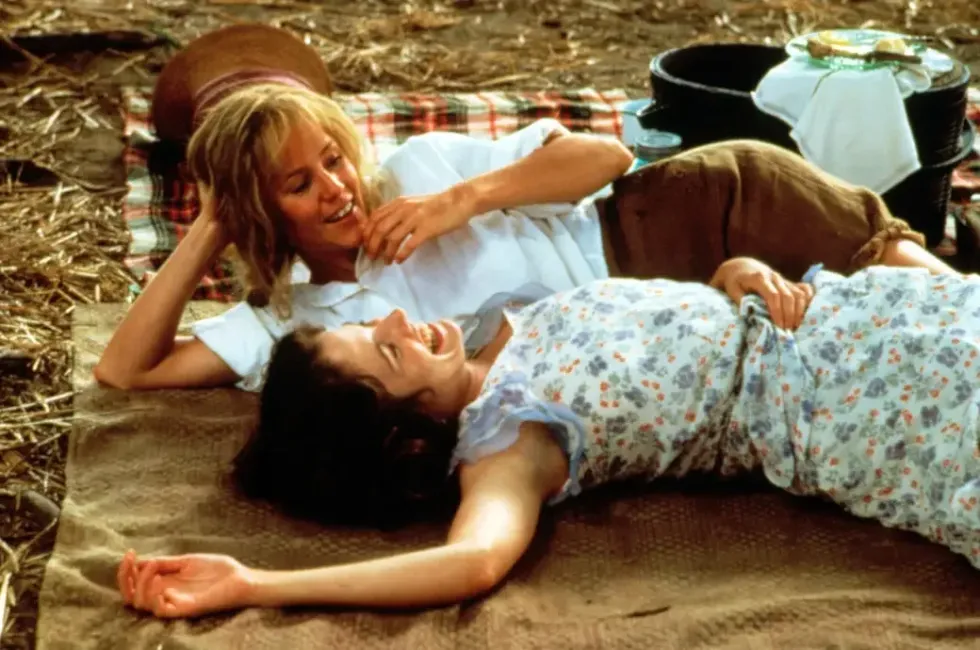
Synopsis: Housewife Evelyn Couch's (Kathy Bates) befriends Ninny Threadgoode (Jessica Tandy) on a visit to a nursing home. Ninny recounts the exploits of her free-spirited sister-in-law Idgie (Mary Stuart Masterson) in the 1920's, and the bond Idgie shared with her friend Ruth (Mary-Louise Parker).
Why it's important: While the film is never explicitly queer (it's partially set in the '20s, after all), it quickly became a lesbian classic because of the love story between Idgie and Ruth. Their love story is sweet and sad, and although the words gay or lesbian aren't used to describe them, even their small town recognizes what the two women are to each other.
9. The Adventures of Priscilla, Queen of the Desert (1994)
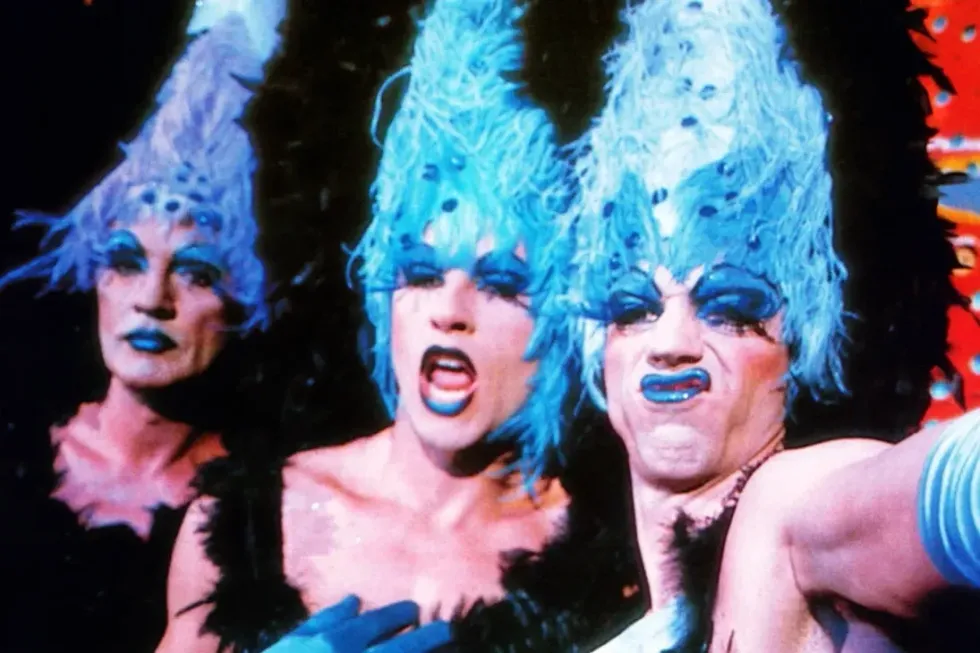
Synopsis: This comedy follows a Australian drag queens played by Terrence Stamp, Hugo Weaving and Guy Pearce as they travel on a bus named Priscilla to a gig in the Outback and get into hijinks along the way.
Why it's important: The film was a surprise worldwide hit with mainstream audiences and broke boundaries because it showed gay men in drag as opposed to straight men cross-dressing like had been done in the past.
10. To Wong Foo, Thanks for Everything! Julie Newmar (1995)
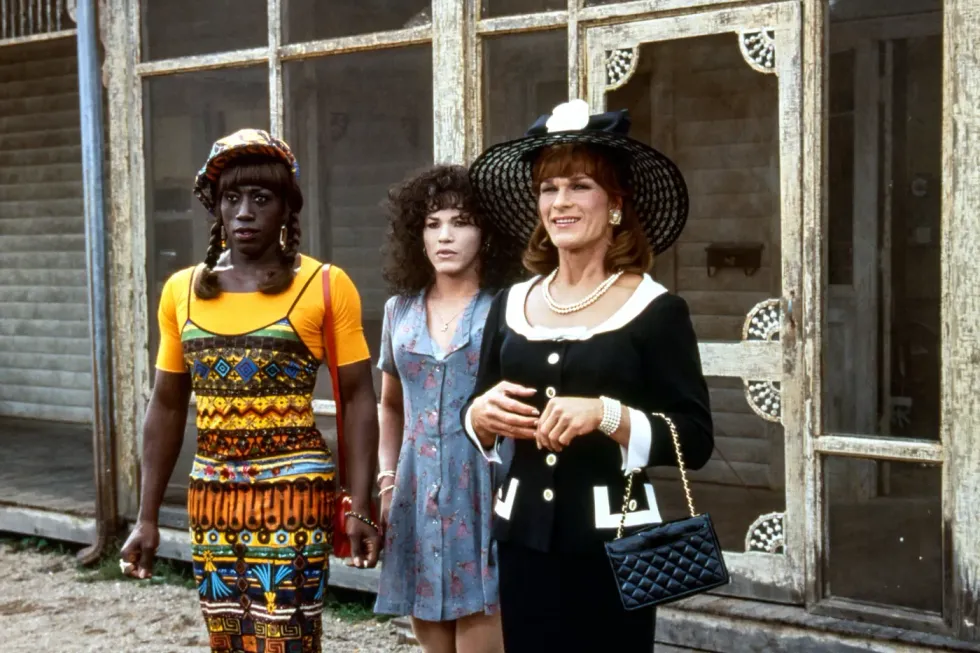
Synopsis: Patrick Swayze, Wesley Snipes, and John Leguizamo star as drag queens who travel cross-country until their car breaks down, leaving them stranded in a small town.
Why it's important: You can criticize it for not getting drag quite right and for sanitizing a subversive part of queer culture, but it’s also a heartwarming movie that was groundbreaking in the ‘90s and brought drag queens into the homes of everyday Americans.
11. The Birdcage (1996)
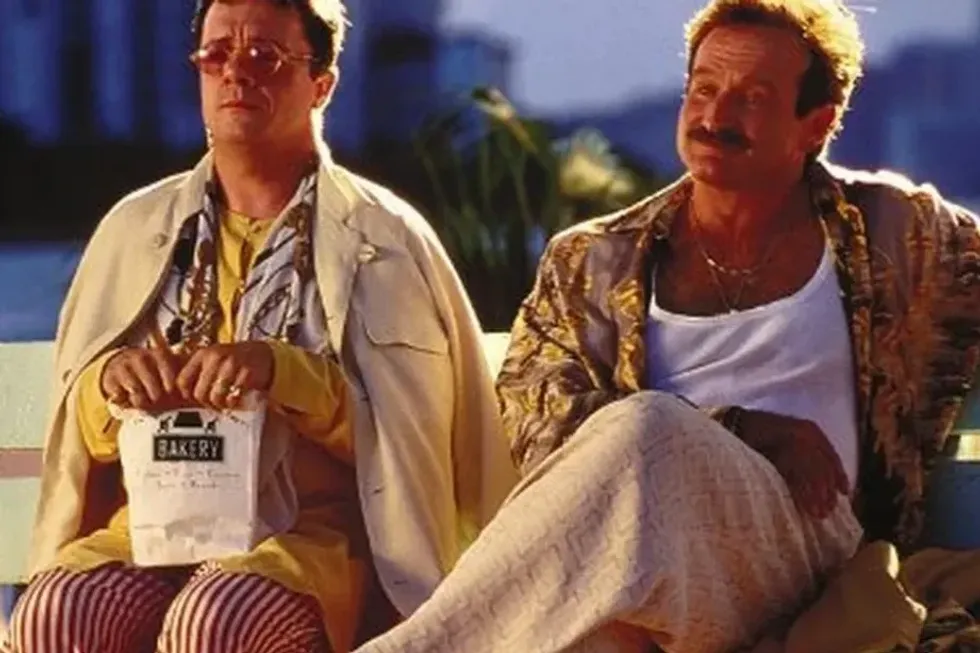
Synopsis: Starring Robin Williams and Nathan Lane, The Birdcage follows a gay Miami drag club owner and his drag queen companion who agree to pretend to be a straight couple so that their son can introduce them to his fiancée's right-wing parents.
Why it's important: The '90s was still a rough time to be queer and gay characters in movies were still few and far between. So, while the LGBTQ+ characters may seem like caricatures, The Birdcage was groundbreaking because it showed a loving gay couple who had a healthy, happy son of their own and gay culture inside the club.
12. Bound (1996)

Synopsis: Corky, a lesbian ex con hired to work in an apartment as a plumber, meets neighbors Caesar, who launders money for the Mafia, and his girlfriend Violet. The two women have a love affair and decide to steal $2,000,000 that Caesar has in custody before he gives them back to Mafia boss Gino Marzone.
Why it's important: Starring Gina Gershon and Jennifer Tilly and directed by the Wachowski sisters, who had yet to come out as trans, this low-budget erotic thriller borrowed from noirs of the past but made the hero a woman, and her love interest another woman. It was daring in the mid-'90s to make such a sexy, erotic movie focused on a lesbian couple.
13. But I'm a Cheerleader (1999)
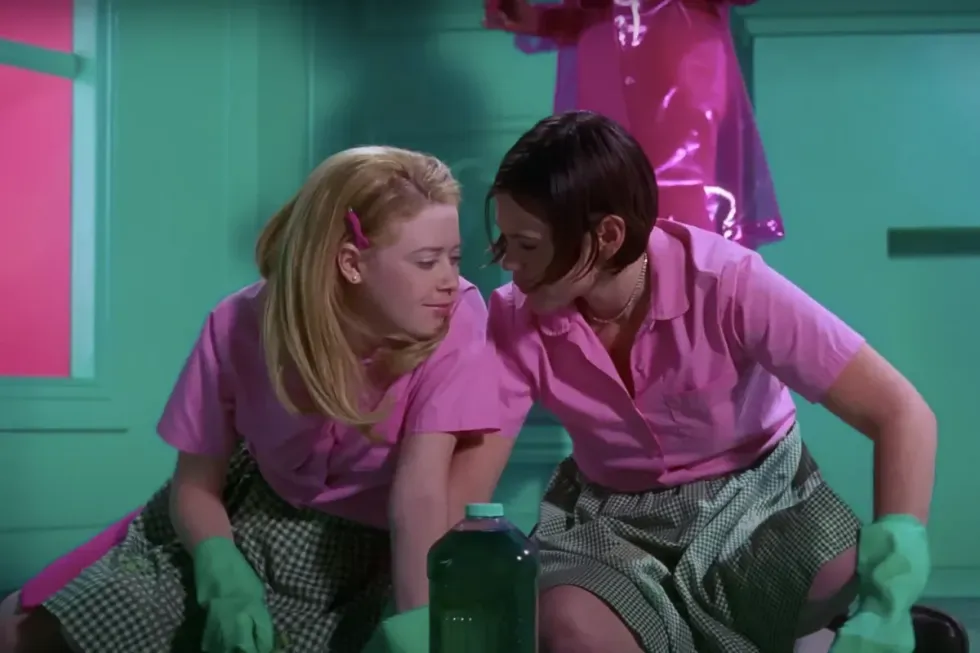
Synopsis: A naive teenager played by Natasha Lyonne is sent to rehab camp when her straitlaced parents and friends suspect her of being a lesbian.
Why it's important: This film holds cult classic status for many reasons, including the candy-colored aesthetic, the queer characters, the fact that it made straight people the butt of the joke in the ‘90s, and for being a self-aware comedy about growing up queer in a homophobic place.
14. Boys Don't Cry (1999)

Synopsis: Based on a true story, Boys Don't Cry follows a young transgender drifter named Brandon as he navigates love, life, and trying to pass as a boy in rural Nebraska, but is ultimately murdered in a violent hate crime.
Why it's important: While there has been fair criticism since the movie came out because of the broad interpretation of Brandon Teena's harrowing story and because Hilary Swank was cast instead of a trans actor, the film also humanized a trans man and catapulted the brutal hate crime that killed him into the spotlight. Directed by genderqueer filmmaker Kimberly Pierce, who even traveled with the Transexual Menace activist group as research for the film, Boys Don’t Cry remains a seminal queer film despite its problems.
15. Hedwig and the Angry Inch (2001)
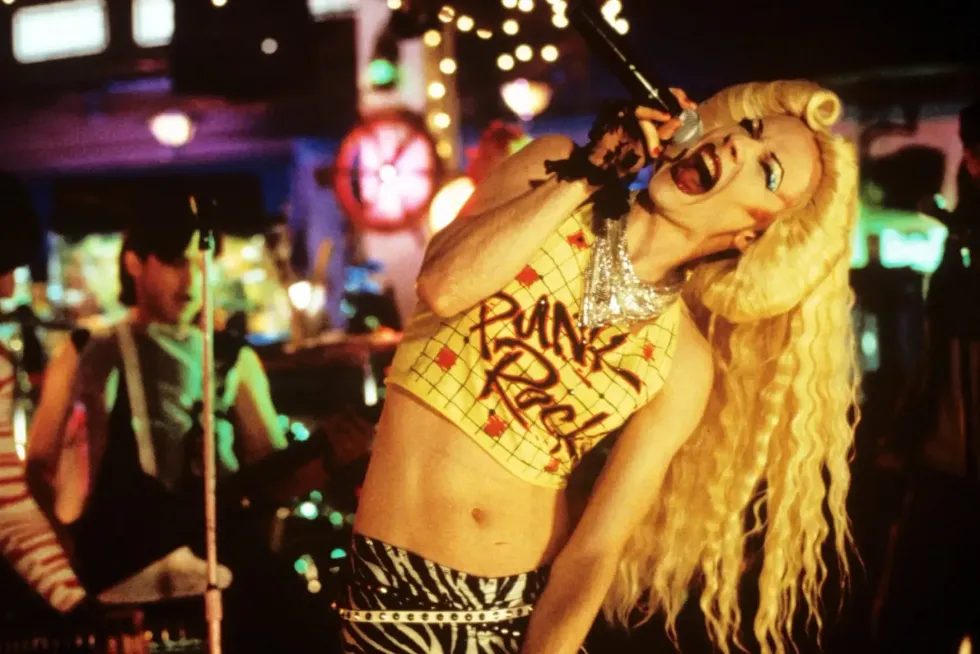
Synopsis: This film, adapted from the critically acclaimed off-Broadway hit, follows a German emigrant living in a trailer in Kansas is the victim of a botched sex-change operation, and tells the story of the "internationally ignored" rock singer, Hedwig, and her search for stardom and love.
Why it's important: Hedwig and the Angry Inch came out shortly after 9/11 and took theaters by storm. At a time when the most prominent queer characters in media were the sanitized gay men on Will & Grace, Hedwig celebrated a genderqueer character challenging the status quo.
